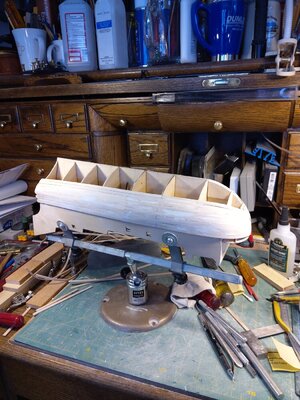I've been watching videos for the last few days and have noticed some people doing very precise work on planking that didn't appear to need any fill, and some who do good work, but the fit isn't quite as precise because they were planning on filling it anyway.
I generally prefer to work with stains rather than paint, just a personal preference, and even with a good stain-able filler, I suspect horizontal lines will still be visible. But then I was also thinking that those lines might give a nice caulking effect to the planking, and if that were the case, would it be better to stagger the planking to get the vertical lines also instead of using one long strip the length of the hull?
I also noticed people using these push pin type tools to hold the planking while the glue dried. Is something like that a better way to go rather than using clamps and rubber bands?
Thanks
I generally prefer to work with stains rather than paint, just a personal preference, and even with a good stain-able filler, I suspect horizontal lines will still be visible. But then I was also thinking that those lines might give a nice caulking effect to the planking, and if that were the case, would it be better to stagger the planking to get the vertical lines also instead of using one long strip the length of the hull?
I also noticed people using these push pin type tools to hold the planking while the glue dried. Is something like that a better way to go rather than using clamps and rubber bands?
Thanks







